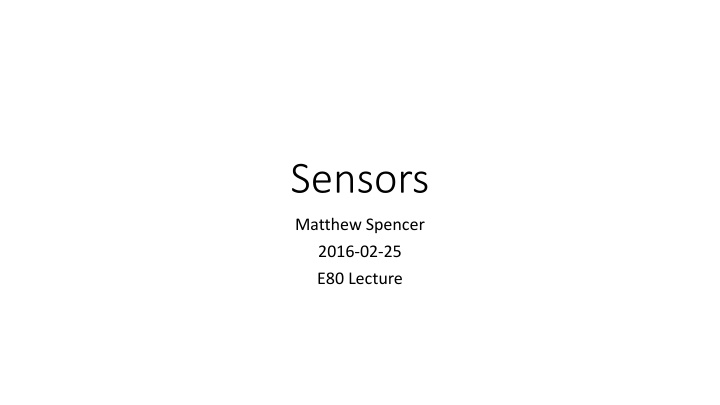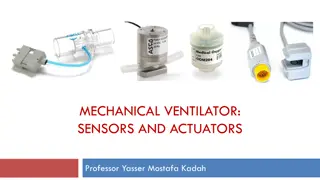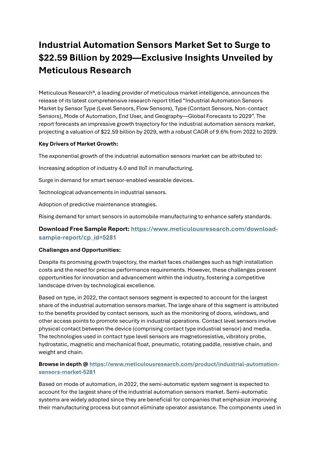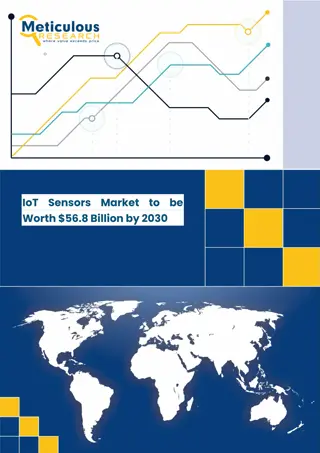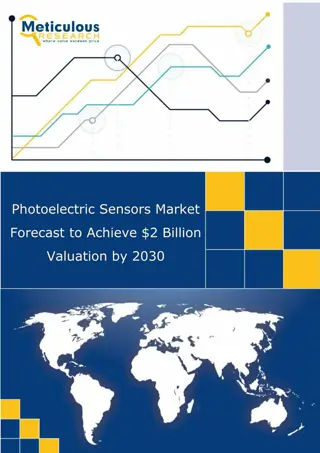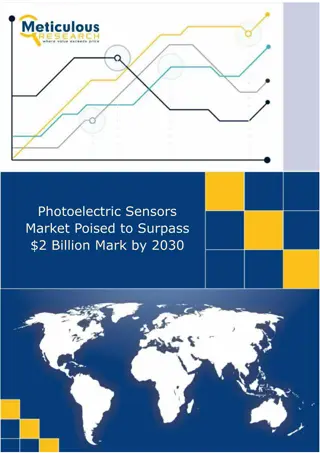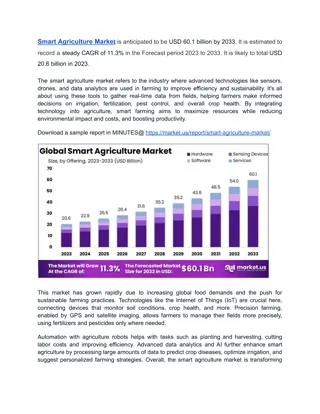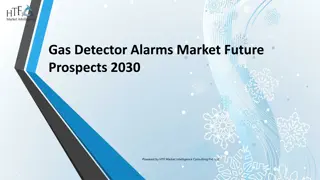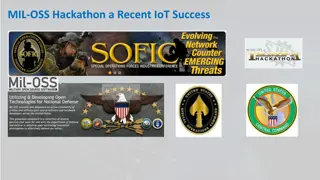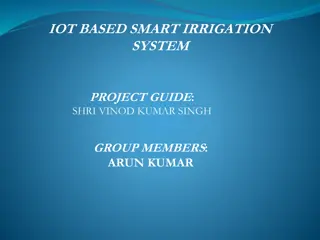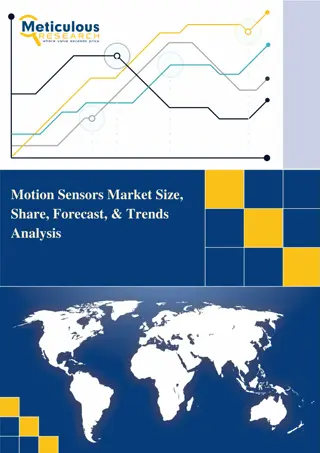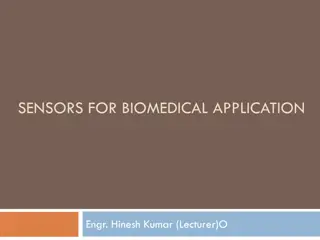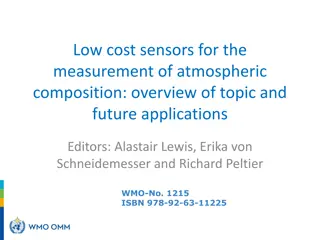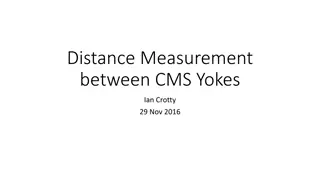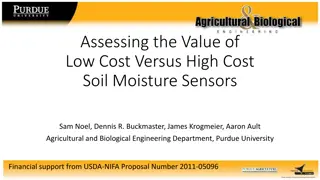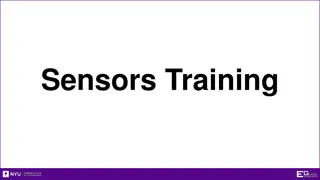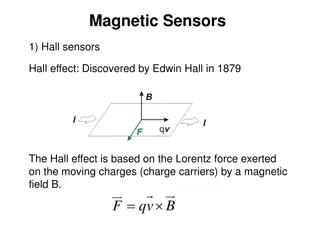Sensors
Delve into the realm of sensors with a focus on aerospace engineering. Discover the varied applications and characteristics of sensors, from altimeters for big flights to the dynamic performance described by E59. Learn about static and dynamic performance, calibration processes, and how digitized sensor output properties affect functionality.
Download Presentation

Please find below an Image/Link to download the presentation.
The content on the website is provided AS IS for your information and personal use only. It may not be sold, licensed, or shared on other websites without obtaining consent from the author.If you encounter any issues during the download, it is possible that the publisher has removed the file from their server.
You are allowed to download the files provided on this website for personal or commercial use, subject to the condition that they are used lawfully. All files are the property of their respective owners.
The content on the website is provided AS IS for your information and personal use only. It may not be sold, licensed, or shared on other websites without obtaining consent from the author.
E N D
Presentation Transcript
Sensors Matthew Spencer 2016-02-25 E80 Lecture
Youll Fly Sensors on Your Rockets Also, you need them in your work http://thehauntedrocket.tumblr.com/post/135268424227/marsvikings-the-viking-lander-is-a-superbly
Motivating Question What kind of altimeters are suitable for our big flight? How are we going to answer that question?
Isnt Sensors a Super Broad Topic? https://www.ifixit.com/Teardown/iPhone+4+Gyroscope+Teardown/3156 http://www.ligo.org/multimedia/gallery/lho.php
A Disciplined Way to Consider Sensors Static Performance Dynamic Performance Interface and Readout Physics Sanity Checks
Static Performance Summarized in a Graph Reported Quantity (e.g. : voltage) Linearity Max Output Full Scale Range Offset Max Input Sensed Quantity (e.g. : temperature)
Digitized Sensor Output has Same Properties Linearity Max Input
Calibration Can Fix Offset and Non-Linearity Fixes non-linearity and offset. Doesn t fix noise. Can only fix noise with more power / less loss. Difficult to calibrate in production settings: time is money Be careful of time-variance. Fancy sensors have online calibration.
Resolution Varies w/ Input if Very Non-linear Higher gain here Big input swing small output Susceptible to output noise
Dynamic Performance is Described by E59 http://www.vishay.com/sensors/sensors-temperature/ntc/ https://www.adafruit.com/datasheets/CMA-4544PF-W.pdf
Sensor Interfaces Analog Use a buffer if Req is big Apply gain or offset if Voc is small or centered at an odd voltage Probably need to digitize the analog output to record it
Sensor Interfaces Digital Voltage Levels Serial vs. Parallel If Serial, what is the protocol? http://www.microchip.com/wwwproducts/en/MCP3002
Physics Sanity Check http://www.seeedstudio.com/wiki/images/thumb/3/36/Piezo_Vibration_Sensor_02.jpg/400px-Piezo_Vibration_Sensor_02.jpg https://prometheusfusionperfection.com/category/oscilloscope/ Make sure you re measuring what you think you re measuring Check magnitude and phenomenology
Apply Sensors Checklist to the Theodolite Physics: pendulum points down and user points at rocket. ? ?= 9.8 0.1 10 ???/?. Second order system calculation ?0= Flights take 2-3 seconds before apogee. ~90 notches: 1/degree. I can t aim to 1 degree. Readout is manual / mechanical. Slow, but launches slower
Apply the Sensors Checklist to an Altimeter Information pulled from datasheet Asking: Would this work for the final flight?
Physics Check: Get Altitude from Air Pressure By Cmglee - Own work, CC BY-SA 3.0, https://commons.wikimedia.org/w/inde x.php?curid=17311330 Need a model of air pressure and a model of our flight
Find Model of Troposphere in 2015 Lecture (Originally from 1976 Standard Atmosphere Model) Be sure to use all resources at your disposal so we can help you! Be sure to attribute everything you use. (Thanks, Prof. Spjut!)
Find Arreaux Flight Models Apogee is 1 mile AGL At 15s Velocity Is ~330 ft/s (~100 m/s) Launch at 3000 ft. MSL
Static Properties P_launch=90kPa, P_apogee = 74kPa Add -13% to +7% for Barometric pressure range is 64kPa 104kPa Accuracy +/- 1.5% Vfs and range is 4.5V representing 100kPa +/- 0.157 kPa, +/- 157m. Resolution OK? Depends on needs. Result is non-linear b/c of exponential pressure model. Calibrate.
Dynamics Response time (10%-90% rise time) is 1.2ms tau = 0.46ms Velocity is 330 ft/s = 0.33 ft/ms = 10cm/ms Tau=1 and DC gain = 1 in this example http://www.slideshare.net/SaifUllah32/lecture-13-14timedomainanalysisof1stordersystems
Interface Analog output Need to measure Zout, datasheet says little. (How?) Expect to get 675 mV of swing on top of 200 mV offset. (Fixable?)
Interface Digitizing With the Data Logger 16 analog channels: 16 bit, 2.2 kOhm Zin, sampled at 12.5 kHz 3.3 V supply and full scale input range. Saves to on board SD card.
Interface Data Loggers and Digital Sensors Connect Synchronizing Signal CLOCK 1 CLOCK 2 http://www.robotshop.com/en/arduino-nan-v-3.html
Interface Be Careful of Your Power System Vreg 2.5V + Voltages cannot be negative! Battery has ~250 mA-hrs energy Separate batteries for high power subsystems https://upload.wikimedia.org/wikipedia/commons/8/8d/Duracell_9_Volt_0849.jpg
Final Project Ideas Science Measurements (measure stuff around the rocket) Atmosphere: Particles, chemicals, flow rate, humidity, material phases, charge Radiation: UV, IR, any optical frequencies, gamma rays, etc. Multimedia: sounds, images, video Engineering Measurements (measure stuff about the rocket) Flight: rotation, acceleration, vibration, displacement, orientation, flow rate Electrical: power consumption, voltages, capacitances, inductances Don t forget that you often need a way to get airflow over sensors
Where do I find More Sensors? Digikey demonstration Last year s lecture has a deeper dive into a few datasheets. MQ-2 Methane gas sensor (requires heater) GP2Y1010AF Particle sensor (requires pulse signal, could roll your own) A few humidity sensors (capacitive sensors require cool readout circuits!)
